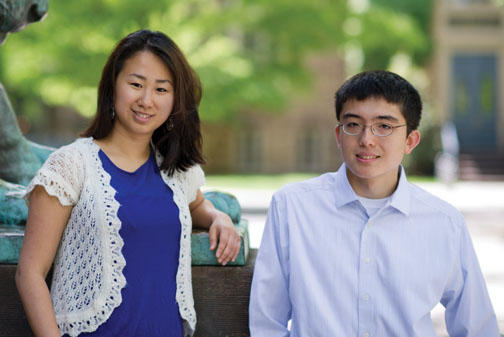Asian-American studies: Backers see hopeful signs
After four decades of laying the groundwork, supporters of an Asian-American studies program at Princeton see signs that their dream is coming closer to reality.
On March 26 — the 20th anniversary of a report by the Asian American Student Task Force that discussed racial insensitivity on campus and proposed an Asian-American studies program — the Asian American Students Association (AASA) issued a new call for action. In a 59-page report, the group urged the University to take the following steps by the fall of 2015:
• Create an interdisciplinary certificate program in Asian-American studies that offers at least eight courses a year.
• Support professors interested in doing research related to Asian-American studies.
• Commit to recruiting Asian-American studies faculty.
• Accept — and spend — funds to expand Asian-American studies. Past donations by the Asian American Alumni Association of Princeton (A4P) to create a program have been rejected by the University, the AASA said.
“We are definitely not the first people to push for this,” said Linda Zhong ’15, AASA co-president. “[But] it’s got more momentum than past movements have ... we’re seeing actual results.”
AASA members met with Provost Christopher Eisgruber ’83 shortly before his selection to become Princeton’s next president, as well as with Dean of the College Valerie Smith.
“We have the impression it’s a topic of serious discussion among University faculty and administrators,” said Evan Kratzer ’16, chairman of AASA’s Asian American Studies Committee.
University spokesman Martin A. Mbugua said in a statement that administrators have been working with faculty on moving the proposal forward.
“We have offered support to departments wishing to recruit additional faculty members with an interest in Asian-American studies, and we expect some searches in this area to begin next fall,” Mbugua said. The University also will support faculty interested in teaching a gateway course in Asian-American studies, he said.
“This is a movement that began with student-initiated seminars and courses in the 1970s,” said April Chou ’96, a former AASA president who was a leader of a 1995 sit-in at Nassau Hall that called for Latino and Asian-American programs. “Nearly 40 years later, it is time.”
About 20 percent of the student body is Asian-American, the association said, but the study of Asian-American issues should not be limited to that group.
AASA members noted that visiting professor Gary Y. Okihiro, the founding director of the Center for the Study of Ethnicity and Race at Columbia University, taught a spring course on “A History of Race in the United States.” Franklin Odo ’61 *75, founder of the Smithsonian’s Asian Pacific American Center, will be a visiting professor in the fall, teaching a course titled “Asian Americans and Public History/Memory.” Other courses have incorporated Asian-American issues as well.
About 40 colleges have Asian-American study programs, the AASA proposal said. “There is a rich field of research that Princeton is missing out on by lacking an Asian-American studies program,” the group said. “The University must act now.”











No responses yet